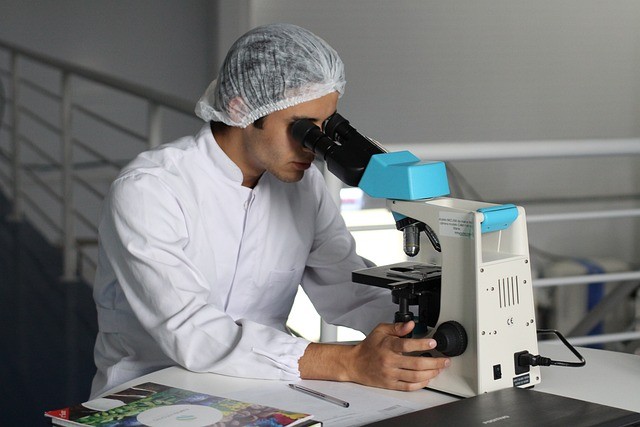Antifungal (or antifungal) drugs are used to treat mycoses, i.e. infections caused by fungi.
Some of these, called superficial mycoses, can affect the skin, mucous membranes, hair or nails, such as:
- ringworm of the skin or hair
- athlete’s foot
- onychomycosis (fungal nail infections)
- vaginal or oral/pharyngeal candidiasis (thrush)
- pityriasis versicolor (sea fungus)
There are also more serious fungal infections (systemic or invasive mycoses) that develop within body tissues, and require hospital treatment, the most common of which are:
Advertisements
- candidemia and invasive candidiasis
- pulmonary aspergillosis
- fungal meningitis, which affects the brain
These serious infections develop especially in people with weakened immune systems, such as patients with serious underlying diseases, immunocompromised patients, patients in intensive care units, transplant recipients, patients undergoing chemotherapy, or those infected with HIV.
TYPES OF ANTIFUNGAL DRUGS
Antifungal medications are available as:
- topical antifungals (for local use), creams, ointments, sprays, or powders that you can apply directly to your skin, hair, or nails; douches or pessaries for the treatment of vaginal mycosis; medicated enamels for the treatment of onychomycosis
- orally administered systemic antifungals, capsules, tablets, syrups or oral gels
- intravenously administered systemic antifungals, generally for hospital use
There are different classes of antifungal drugs, including:
- polyenes (amphotericin B, nystatin)
- Azoles (posaconazole, ketoconazole, fluconazole, itraconazole, clotrimazole, voriconazole, econazole, miconazole, clotrimazole)
- echinocandins (caspofungin, micafungin, anidulafungin)
- allilamine (terbinafine, griseofulvin)
- morfoline (amorolfina)
- antimetabolites (flucytosine)
- others (ciclopirox, tolnaftate)
Clotrimazole, miconazole, econazole, ketoconazole, nystatin, terbinafine, tolnaftate, amorolfine and ciclopirox are the most common active ingredients contained in the various antifungals for topical use used for the treatment of the various forms of superficial mycosis.
Oral fluconazole, econazole, itraconazole, miconazole, nystatin, griseofulvin and terbinafine are used, in combination with topical drugs, for the treatment of various superficial mycoses if in a severe, relapsing or resistant form to topical treatments alone.
Voriconazole, itraconazole, fluconazole, amphotericin B, flucytosine, micafungin, caspofungin and anidulafungin, administered orally or intravenously, are used for the treatment of various forms of invasive mycoses, usually in the hospital.
HOW ANTIFUNGAL DRUGS WORK
Like antibiotics for infections caused by bacteria, antifungal drugs work by killing fungal cells and/or preventing them from multiplying.
The main mechanisms by which antifungal drugs exert their action are:
- alteration of the synthesis or functionality of the fungal cell membrane, which compromises its reproduction and infectious activity (polyenes, azoles, allylamines, morpholines)
- inhibition of cell wall synthesis, which makes the fungal cell vulnerable to the external environment and unable to grow and multiply (echinocandins)
- interference with the metabolism of the fungal cell, which makes it unable to feed and grow efficiently (antimetabolites)
THINGS TO CONSIDER FOR PROPER USE OF ANTIFUNGAL DRUGS
Often the symptoms of other diseases that have different causes can be confused with those of the more common mycoses. Furthermore, each antifungal drug, depending on the pharmaceutical form and active ingredient, is indicated for the treatment of certain forms of fungal infections but not others.
If you think you have a fungal infection, it is therefore advisable to contact your doctor to have a certain diagnosis, as well as an indication of the most suitable and specific antifungal drug and the necessary information on the most appropriate doses and treatment methods. In particular, oral antifungals should only be used if prescribed by and under the supervision of a doctor.
For the use of over-the-counter medicines, consult with the pharmacist and always read the package leaflet to use the medicine correctly.
Note that:
- like all medications, antifungals can cause various unwanted side effects
- in some people, antifungals can cause allergic reactions
- some diseases or conditions of the patient may be a contraindication to their use or may adversely affect the effectiveness of the therapy
- antifungal medications may interact or be incompatible with other medications, supplements, or other substances you are already taking
- some antifungal medications can’t be taken while pregnant or breastfeeding
- the unnecessary or inappropriate use of these drugs can contribute to the development and spread of resistance, the phenomenon whereby disease-causing microorganisms (including fungi) become less sensitive or completely insensitive to the action of drugs used in medicine to fight them
SIDE EFFECTS OF ANTIFUNGAL DRUGS
Antifungal drugs, especially those used by mouth, can cause side effects in some people. These are usually mild and only last for a short time and can include:
- irritation, itching or burning of the skin or mucous membranes (oral or vaginal)
- nausea, vomiting or diarrhoea, abdominal pain (stomach ache)
- heachache
- malaise
More rarely, the antifungal drug can cause more serious reactions such as:
- widespread allergic reactions affecting the skin (urticaria)
- severe allergic skin rashes with blistering and severe peeling of the skin
- general allergic reactions, your face, neck or tongue may swell and you may have difficulty breathing
- liver damage, may manifest as changes in liver function tests, loss of appetite, vomiting, nausea, jaundice, dark urine or pale stools, tiredness or weakness
- abnormal tests of kidney function, presence of blood or protein in urine, kidney failure
- neurological symptoms (dizziness, impaired sense of taste)
If these more serious side effects occur, you should stop taking these medicines and contact your doctor immediately.
To find out the possible specific side effects of the different antifungal drugs, and their frequency (common, uncommon, rare), you can read the package leaflet.
ANTIFUNGAL DRUGS FOR CHILDREN
Some antifungal medications can also be used on children and infants, for example, miconazole oral gel can be used to treat oral thrush in children.
NurseTimes editorial team
Bibliography
NHS. Antifungal medicines
Stay up to date with Nurse Times, follow us on:
Telegram – https://t.me/NurseTimes_Channel
Instagram – https://www.instagram.com/nursetimes.it/
Facebook – https://www.facebook.com/NurseTimes. NT
Twitter – https://twitter.com/NurseTimes
